
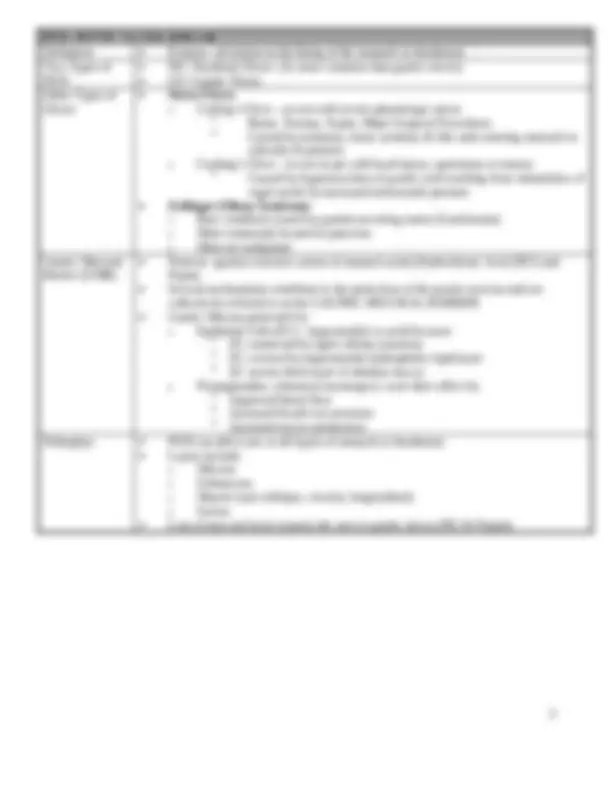
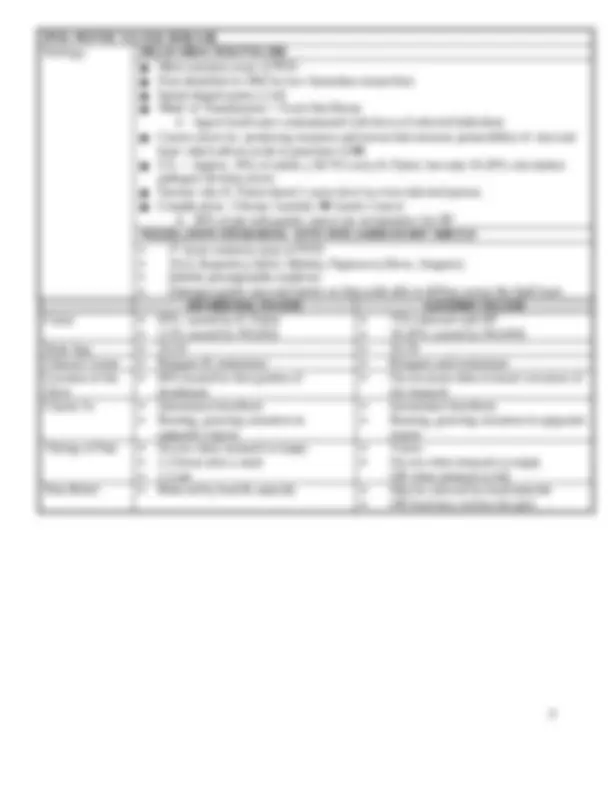
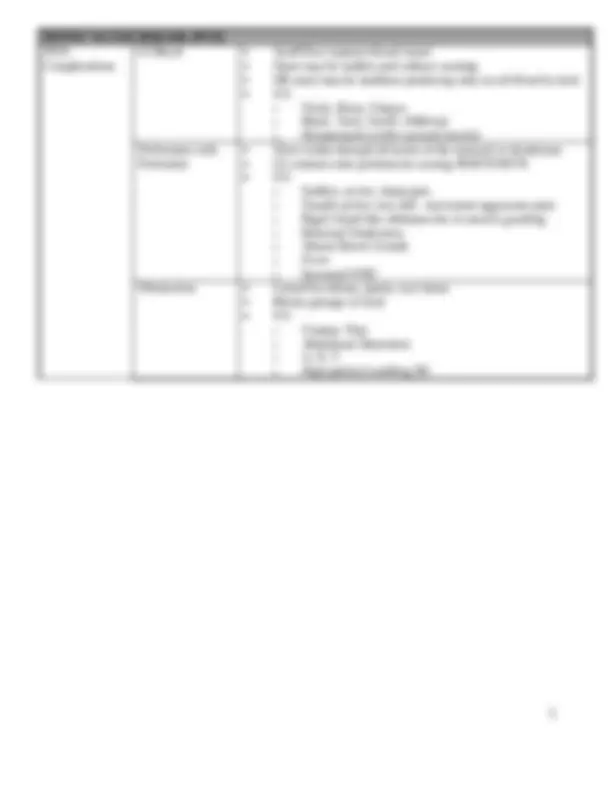
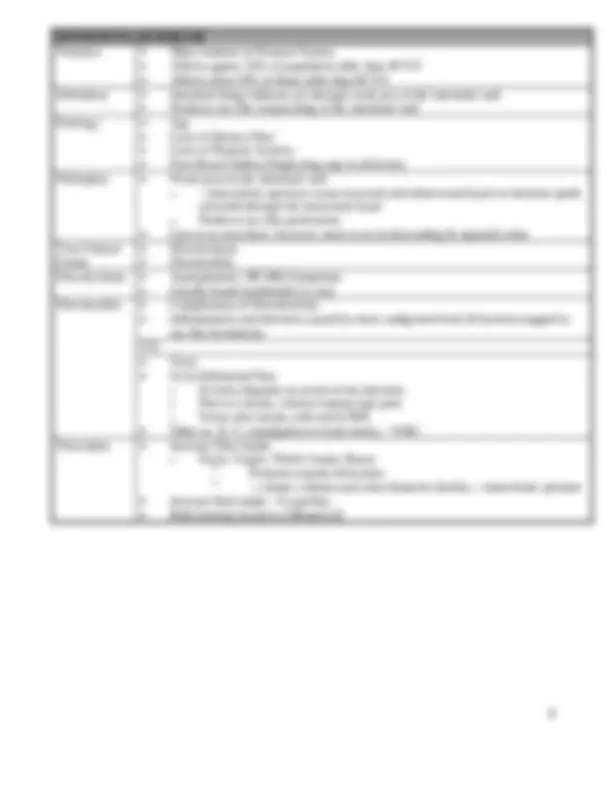
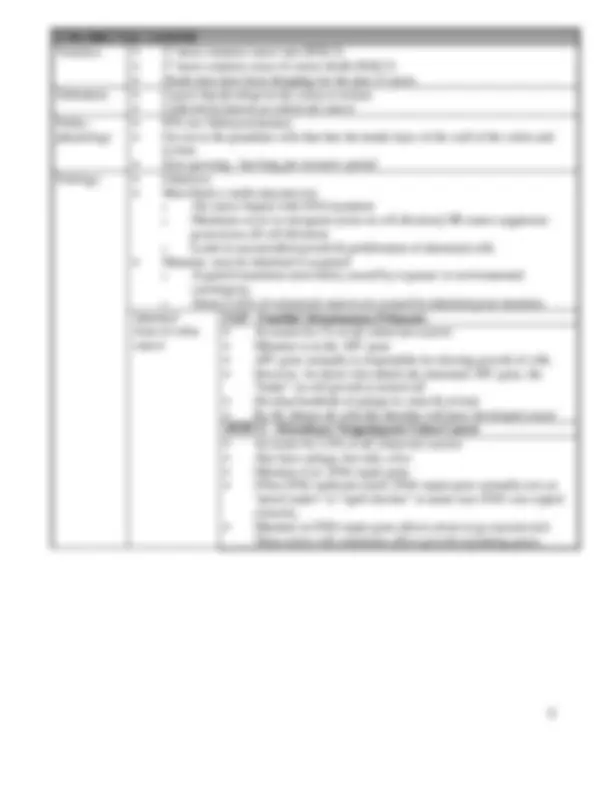
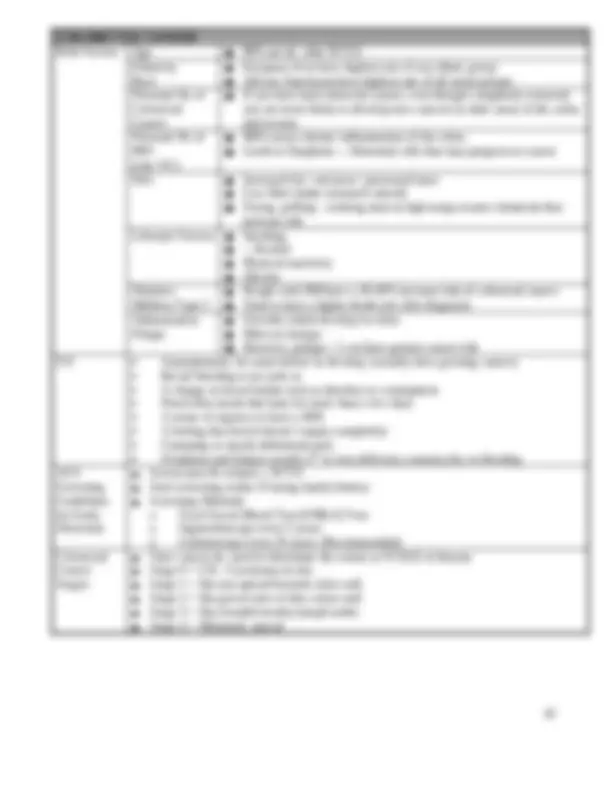


Study with the several resources on Docsity

Earn points by helping other students or get them with a premium plan


Prepare for your exams
Study with the several resources on Docsity

Earn points to download
Earn points by helping other students or get them with a premium plan
Community
Ask the community for help and clear up your study doubts
Discover the best universities in your country according to Docsity users
Free resources
Download our free guides on studying techniques, anxiety management strategies, and thesis advice from Docsity tutors
An overview of various gastrointestinal disorders, including their causes, pathophysiology, symptoms, complications, and preventive measures. Topics covered are gastroesophageal reflux disease (gerd), duodenal and gastric ulcer, inflammatory bowel disease (ibd), diverticular disease, and colorectal cancer.
Typology: Study notes
1 / 11

This page cannot be seen from the preview
Don't miss anything!







NU 231 Pathophysiology GI Disorders Topics:
GASTROESOPHAGEAL REFLUX DISEASE (GERD) Definition Refers to backward movement (reflux) of gastric contents into the esophagus through the lower esophageal sphincter (LES), which leads to heartburn. Etiology / Pathophysiology Caused by weak or incompetent LES that fails to close tightly after swallowing food LES Dysfunction may be due to: Transient Relaxation of LES (Most Common) Increased intra-abdominal pressure Permanent Relaxation of LES Hiatal Hernia Transient Relaxation of LES Common after meals Certain foods / beverages can increase relaxation of LES Foods (High Fat, Fruit, Chocolate, Peppermint, Tomato-Based Foods, Onions, Garlic) Beverages (Coffee, Alcohol, Citrus drinks) Smoking can also cause relaxation Increased intra-abdominal pressure Obesity Pregnancy Supine position or bending forward Hiatal Hernia Stomach protrudes thru the diaphragm into the thorax Pts with moderate to severe reflux often have hiatal hernia GERD: GASTROESOPHAGEAL REFLUX DISEASE S/S Heartburn (caused by regurgitation of gastric contents) Burning sensation in epigastric region Sour Taste Occurs 30-60 min after eating, esp. large, fatty meal Worse in supine position or bending forward Often occurs at night Epigastric discomfort may be confused with angina because of the location of the pain Asthma Type Symptoms Cough, Wheezing Chronic Sore Throat Complications Erosive (Reflux Esophagitis Acidity of stomach irritates & inflames the esophagus Barrett’s Esophagus Occurs if reflux is severe and untreated Results in Metaplasia increased risk of esophageal cancer Counseling to prevent or decrease symptoms ● Avoid foods that cause sx ● Eat small, frequent meals ● Decrease fatty meals ● Avoid eating at HS ● Avoid supine position x 3 hours after meal ● Elevate head of the bed (HOB) on blocks ● Stop smoking ● Reduce alcohol intake ● Weight Loss
Etiology HELICOBACTER PYLORI ● Most common cause of PUD ● First identified in 1982 by two Australian researchers ● Spiral-shaped gram (-) rod ● Mode of Transmission = Fecal-Oral Route o Ingest food/water contaminated with feces of infected individual ● Causes ulcers by producing enzymes and toxins that increase permeability of mucosal layer which allows acids to penetrate GMB ● U.S. = Approx. 50% of adults > 60 YO carry H. Pylori, but only 10-20% who harbor pathogen develop ulcers ● Unclear why H. Pylori doesn’t cause ulcer in every infected person. ● Complication: Chronic Gastritis Gastric Cancer o 90% of pts with gastric cancer are seropositive for HP NSAIDs (NON-STEROIDAL ANTI-INFLAMMATORY DRUGS 2 nd^ most common cause of PUD ASA, Ibuprofen (Advil, Motrin), Naproxen (Aleve, Anaprox) Inhibits prostaglandin synthesis Damages gastric mucosal barrier so that acids able to diffuse across the lipid layer DUODENAL ULCER GASTRIC ULCER Cause 95% caused by H. Pylori 2-5% caused by NSAIDs 75% infected with HP 10-20% caused by NSAIDS Peak Age 35-55 55- Clinical Course Relapses & remissions Relapses and remissions Location of the Ulcer 90% located in first portion of duodenum Occurs most often in lesser curvature of the stomach Classic Sx Intermittent heartburn Burning, gnawing sensation in epigastric region Intermittent heartburn Burning, gnawing sensation in epigastric region Timing of Pain Occurs when stomach is empty 1-3 hours after a meal 1-2 am Varies Occurs when stomach is empty OR when stomach is full Pain Relief Relieved by food & antacids May be relieved by food/antacids OR food may worsen the pain
Complications GI Bleed Acid/Ulcer ruptures blood vessel Onset may be sudden and without warning OR onset may be insidious producing only occult blood in stool S/S: Weak, Dizzy, Fatigue Black, Tarry, Stools (Melena) Hematemesis (coffee ground emesis) Perforation with Peritonitis Ulcer erodes through all layers of the stomach or duodenum GI contents enter peritoneum causing PERITONITIS S/S: Sudden, severe, sharp pain Usually pt lies very still - movement aggravates pain Rigid, board-like abdomen due to muscle guarding Rebound Tenderness Absent Bowel Sounds Fever Increased WBC Obstruction Caused by edema, spasm, scar tissue Blocks passage of food S/S: Crampy Pain Abdominal Distension A, N, V High-pitched rumbling BS
Level of Involvement May affect ALL layers of intestine from mucosa to serosa Although submucosal layer affected to the greatest extent Affects mucosal and submucosal layer; although mostly mucosal S/S Varies depending on severity RLQ Colicky Abdominal Pain Non-bloody diarrhea Low Grade Fever Malaise Anorexia & Wt Loss Nutritional Deficiencies F & E Imbalances Children: may present w/ growth retardation LLQ Colicky Abdominal Pain Bloody, Mucopurulent Diarrhea ○ Frequency varies according to severity of disease Fatigue and weakness Anorexia Fecal incontinence Complications Colon Cancer = relatively uncommon) Fistula Formation Abscess Formation Perianal Ulcers Colon Cancer = Relatively Common Those with pancolitis for 10 yrs or more are 20-30x greater risk than general population Toxic Megacolon (colon swells - requires immediate treatment)
Statistics Most common in Western Society Affects approx 10% of population older than 40 YO Affects about 50% of those older than 60 YO Definition Intestinal lining balloons out through weak area of the intestinal wall Produces sac-like outpouching of the intestinal wall Etiology Age Lack of Dietary Fiber Lack of Physical Activity Poor Bowel Habits (Neglecting urge to defecate) Pathophys Weak areas in the intestinal wall ↑ intracolonic pressure causes mucosal and submucosal layers to herniate (push outward) through the muscularis layer Produces sac-like protrusions Can occur anywhere; however, most occur in descending & sigmoid colon Two Clinical Forms Diverticulosis Diverticulitis Diverticulosis Asymptomatic OR Mild Symptoms Usually found incidentally (x-ray) Diverticulitis Complication of Diverticulosis Inflammation and infection caused by stool, undigested food, & bacteria trapped in sac-like herniations S/S: Fever LLQ Abdominal Pain Severity depends on extent of the infection Pain is a steady, colicky/crampy type pain Worse after meals; relieved by BM Other sx: N, V, constipation or loose stools, ↑ WBC Prevention Increase Fiber Intake Fruits, Vegies, Whole Grains, Beans Promotes regular defecation ↑ colonic contents and colon diameter thereby ↓ intracolonic pressure Increase fluid intake - 8 cups/day. Bulk forming laxatives (Metamucil)
Risk Factors Age ● 90% are dx after 50 YO Ethnicity Race ● European Jews have highest rate of any ethnic group ● African Americans have highest rate of all racial groups Personal Hx of Colorectal Cancer ● If you have had colorectal cancer, even though completely removed, you are more likely to develop new cancers in other areas of the colon and rectum. Personal Hx of IBD (esp. UC) ● IBD causes chronic inflammation of the colon. ● Leads to Dysplasia -- Abnormal cells that may progress to cancer Diet ● Increased fat / red meat / processed meat ● Low fiber intake (research mixed) ● Frying, grilling - cooking meat at high temp creates chemicals that increase risk Lifestyle Factors ● Smoking ● ↑ Alcohol ● Physical inactivity ● Obesity Diabetes Mellitus Type 2 ● People with DM have a 30-40% increase risk of colorectal cancer. ● Tend to have a higher death rate after diagnosis Adenomatous Polyps ● Growths which develop in colon ● Most are benign ● However, polyps > 1 cm have greater cancer risk S/S Asymptomatic for years before sx develop (usually slow growing cancer) Rectal bleeding is an early sx A change in bowel habits such as diarrhea or constipation Pencil-thin stools that lasts for more than a few days A sense of urgency to have a BM A feeling that bowel doesn’t empty completely Cramping or steady abdominal pain Weakness and fatigue usually 2nd^ to iron deficiency anemia due to bleeding ACS Screening Guidelines for Early Detection ● Screen men & women > 50 YO ● Start screening earlier if strong family history ● Screening Methods Fecal Occult Blood Test (FOB) Q Year Sigmoidoscopy every 5 years Colonoscopy every 10 years (Recommended) Colorectal Cancer Stages ● Once cancer dx, need to determine the extent or STAGE of disease ● Stage 0 = CIS - Carcinoma in situ ● Stage 1 = Has not spread beyond colon wall ● Stage 2 = Has grown into or thru colon wall ● Stage 3 = Has invaded nearby lymph nodes ● Stage 4 = Metastatic spread
Statistics Occurs in about 10% of the population Occurs most commonly between the ages of 10- Uncommon < 5 YO Etiology / Pathophysiology Thought to be due to obstruction of the appendiceal lumen. ○ Fecalith (hard piece of stool) - 50-80% ○ Foreign Body (fruit seed, pinworm, tapeworm, roundworm) ○ Twisting or Stricture Definition Appendix becomes inflamed, swollen, and gangrenous Eventually perforates, if not treated Very difficult to diagnose S/S Abdominal Pain ○ Initially, vague/dull type of pain located around belly button ○ As inflammation increases, pain migrates to RLQ and becomes severe and sharp (usually 12-18 hours) ○ Pain worse with movement A, N, V Fever ↑ WBC McBurney’s Point Rovsing’s Sign Psoas Sign Obturator Sign Complication Appendix Rupture Peritonitis ○ Initially, pain may lessen briefly ● S/S: ○ Sudden, severe pain ○ Rigid, hard abdomen (due to muscle guarding) ○ Lie very still = movement aggravates pain ○ Absent BS ○ Fever, ○ Elevated WBC ○ Rebound tenderness